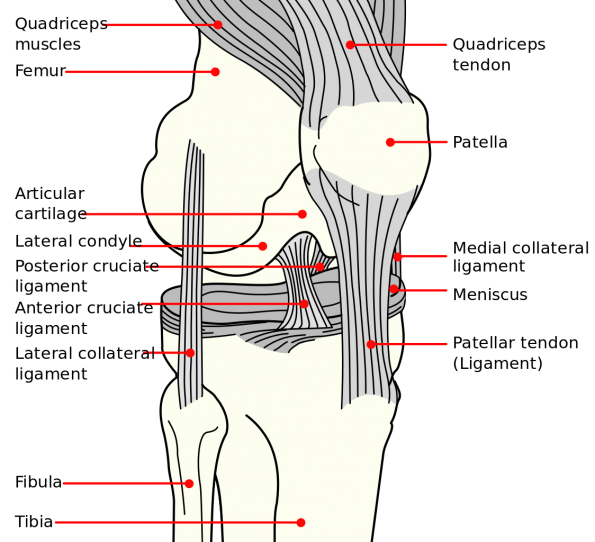YOUR PHYSIO
Condition directory
Knee Ligament injuries

Ligaments are tough bands of tissue that connect the bones in your body. There are four main ligaments around the knee: the anterior cruciate ligament (ACL), posterior cruciate ligament (PCL), medial collateral ligament (MCL) and the lateral collateral ligament (LCL). Too much stress on these ligaments can cause them to stretch too far or even snap completely. The ligament injured usually depends on the mechanism of the injury.
Ligaments of the knee may be injured by:
- Sudden twisting on the knee
- Over extending the knee
- Direct impact to the knee
- Landing awkwardly

After injuring the ligaments of the knee there can be sudden swelling, pain, limitation of movement and an inability to weight bear. The joint could feel loose or there could be a snap or popping heard at the time of injury.
The management of a ligament injury depends on the ligament involved and the severity of the injury. If you feel you have a mild knee ligament injury you can follow the advice on this page. Signs of a more serious injury are immediate severe swelling into the knee and difficulty walking. If you have these symptoms you should attend your local A&E department for further assessment and advice.
Treatment
Initially it is important to follow the RICE principle;
- Rest the affected area for at least the first 48 hours. You may require crutches to avoid putting weight on your leg.
- Ice can help to reduced swelling and inflammation. Only use for 20 minutes at a time and do not apply ice directly to the skin.
- Compression can help to prevent additional swelling. Wear an elastic compression bandage and remove for sleeping.
- Elevation can help to reduce swelling. Recline when you rest, and put your leg up higher than your heart.
The video below shows how to apply an ice pack to your knee
If you have had a minor injury, a graded exercise programme would likely help you make a good recovery. After the injury has started to settle down you should try to get the knee moving as normal. Gentle bending and straightening of the knee can help to restore normal movement and improve how you walk.
The following exercises are likely to be useful:
Try to walk without limping if possible and use the knee as normally as your pain allows you too. If you play sports a gradual return would be recommended.
If the initial swelling and inflammation is settled and you are still having problems with your knee you may be referred for some physiotherapy. After being assessed you are likely to be given an exercise programme to strengthen the muscles around knee. If you are struggling to return to your normal activity levels or your knee is not settling, ask your GP for a referral to physiotherapy or fill out our self-referral form here.
If you have suffered a more significant knee injury such as a complete tear of one of your ligaments you may require surgery to repair this. If this is the case an extensive course of physiotherapy may be offered before and after surgery.